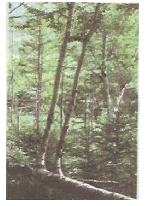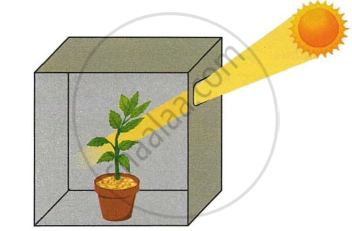Advertisements
Advertisements
प्रश्न
Distinguish between tropic movements and nastic movements in plants. Give examples to illustrate your answer.
How do tropisms differ from nasties (or nastic movements)?
उत्तर १
| Tropic movements | Nastic movements |
| These are directional movements of plants in response to stimulus. | These are non-directional movements of plants in response to stimulus. |
| Example: The upward growth of a plant stem in response to sunlight. | Example: The folding up of leaves in response to touch. |
उत्तर २
| Tropism | Nasties |
| Tropisms are the directional movement of plant parts in response to an external stimulus. | Nasties are the non-directional movements of plant parts in response to an external stimulus. |
APPEARS IN
संबंधित प्रश्न
What does a tendril do in response to the touch of a support? What is this phenomenon known as?
A plant's response to light is called ______.
Why is the closing of a dandelion flower at dusk (when it gets dark) not a tropism?

A big tree falls in a forest but its roots are still in contact with the soil.
The branches of this fallen tree grow straight up (vertically). This happens in response to ______.
Dandelion flowers open the petals in bright light during the daytime but close the petals in dark at night. This response of dandelion flowers to light is called:
The response of plants to gravity is known as geotropism. How are plant parts sensitive to gravity? Describe with the help of a diagram.
Write the scientific terms used to represent the following:
Growing of roots towards the gravity.
The growth movement of plant parts which occurs due to touch stimulus is called ______.
Given below are the figures showing some kinds of tropic movements in plants. Study the same and answer the following questions:

- Which one of these figures is correct? Give reason in support of your answer.
- Name the kinds of movements shown by the root system and shoot system. Define each.
- What are the two stimuli which affect root system and shoot system positively? Name them.
- Which of the following stimuli affects the growth of the root strongly?
- Gravity
- Water
- Draw a neat and labelled diagram of the longitudinal section of a pistil showing chemotropism in an angiospermic plant.
The figure given below depicts a kind of tropic movement in plants. Study the same and answer the following questions:

- What kind of a movement is shown in the figure? Define it.
- How does this movement differ from geotropism?
- Name the stimulus responsible for thigmotropism. Give one example of a plant showing thigmotropism.
- Name one stimulus which gives a positive response for the roots but a negative response for the shoot.
- Draw a neat and labelled diagram of the part of a plant showing leaf tendril. Name the plant.
